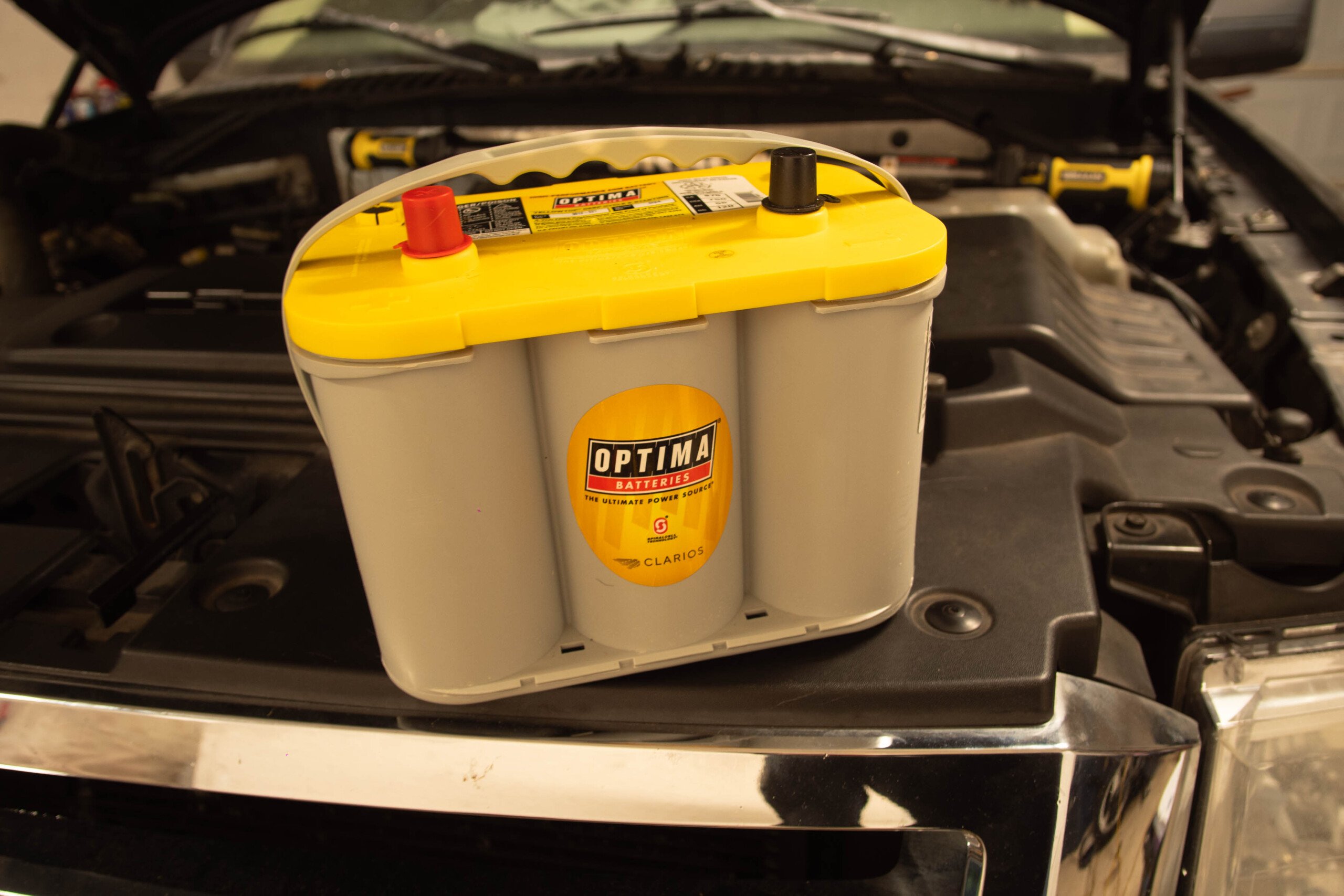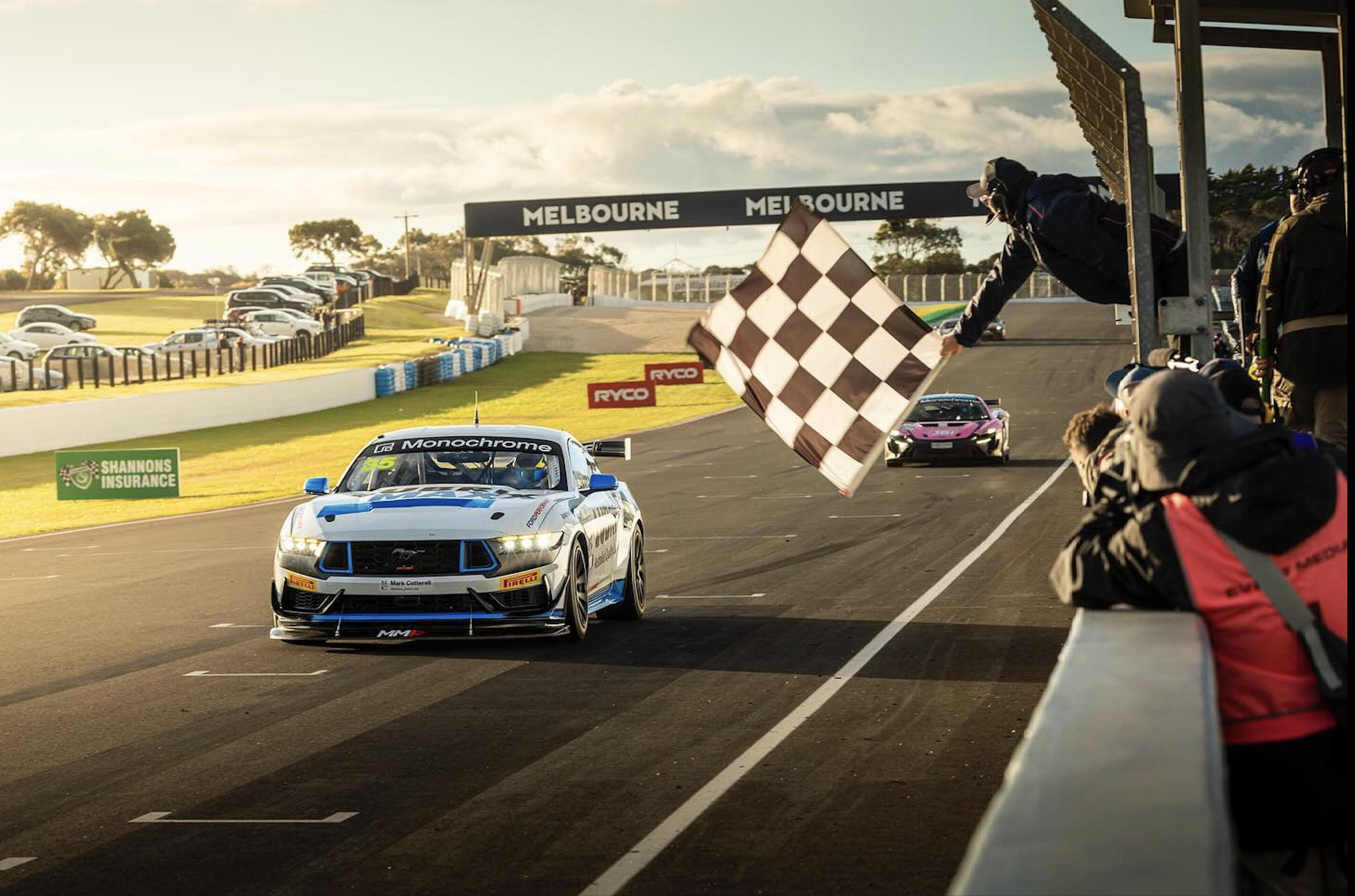When it comes to driveline enhancements for manual transmission-equipped Mustangs, enthusiasts look to two different areas to realize marked improvements. The first area is the shifter, and depending upon model year, plenty of high-quality solutions exist in the market to satisfy drivers of all types, from street stompers to all-out drag or road racing enthusiasts. The second area, and the one we’ll talk about today, is clutch selection. It is with this decision that the driving experience can be enhanced or degraded drastically if the product selected is not correct for the application.Clutch engagement and disengagement — along with power-handling capability — makes all the difference in the world to the driving (or racing) adventures of the vehicle owner.
Enter Vengeance from Competition Clutch. Vengeance is a newer entry into the Mustang marketplace under this brand name. The parent company Competition Clutch’s engineers have decades of experience developing clutch packages that tame the power from street-going weekend toys to all-out racing applications making thousands of horsepower. Its development team has an eye on satisfying the late-model Mustang crowd with a twin-disc clutch that performs as advertised with no compromises.
“We offer the Vengeance clutch design for 1986 to 2017 Mustang applications. There are three different clutches: an organic, ceramic, and a six-puck option,” says Chris Siebert, brand manager, Vengeance Clutch.
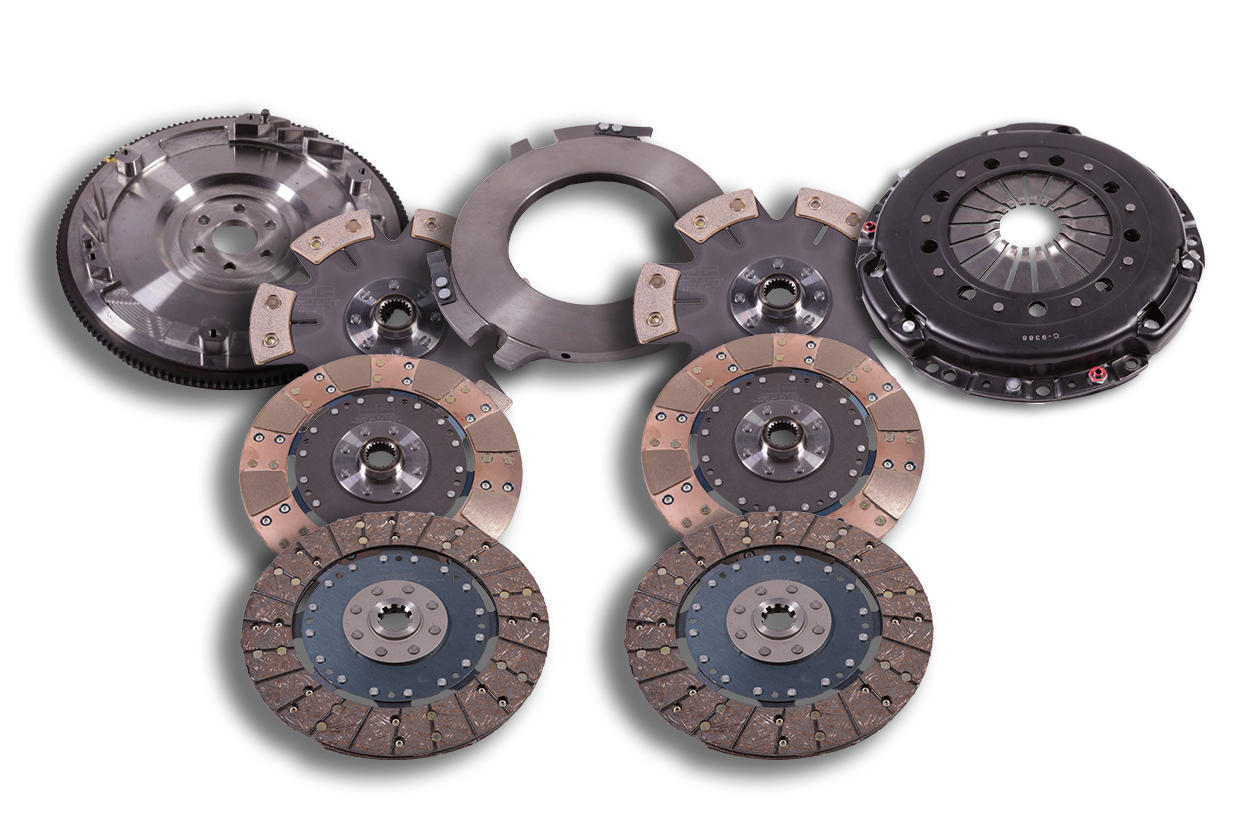
Here are the basics of the Vengeance Stage 1, 2, and 3 clutches laid out. At bottom are the organic Stage 1 discs, then Stage 2 in the middle, and at the top are the big-dog six-puck discs. Power-handling capability of these units is impressive, but they have specific use cases. Read on for more!
Similarities Between The Parts
Before we cover the differences between the three stages of Vengeance twin-disc Mustang clutches, let’s discuss the similarities.
Each 44-pound clutch kit works with the stock-style release bearing for its application and comes with all necessary hardware, threadlocker compound, and detailed installation instructions. The release bearing and pilot bushing are not included.

The pressure plate is the same for the Stage 1 and 2 options, with a higher clamp load plate in the Stage 3 kit. There are slight variations for installed height and other variances between engine/flywheel combinations. It offers an 1,800-pound clamp load to provide a mixture of high-end performance capabilities along with the low-end drivability that Vengeance targets with these products. Clutch release point is set in-house by its talented technicians using set screw limiters.
Under the pressure plate, 240mm unsprung clutch discs pair up using the friction material of the customer’s choice for their application; Siebert says the discs allow the driveline to absorb feedback and noise without affecting performance to provide a clutch that engages quietly. Each material is riveted to the disc to ensure retention under demanding conditions. Each clutch uses a cast steel midplate that sits on the flywheel lugs and spring steel lifter clips. This allows the discs to equalize themselves when the clutch is disengaged.
The billet steel, CNC-machined 22.8-pound flywheel, which comes in every kit, includes patent-pending integral finned cooling slots to help reduce heat in the facing material and provide exit paths for clutch debris to leave the party as the material wears over time. The flywheel can be resurfaced and used multiple times and is delivered complete with a hardened ring gear.
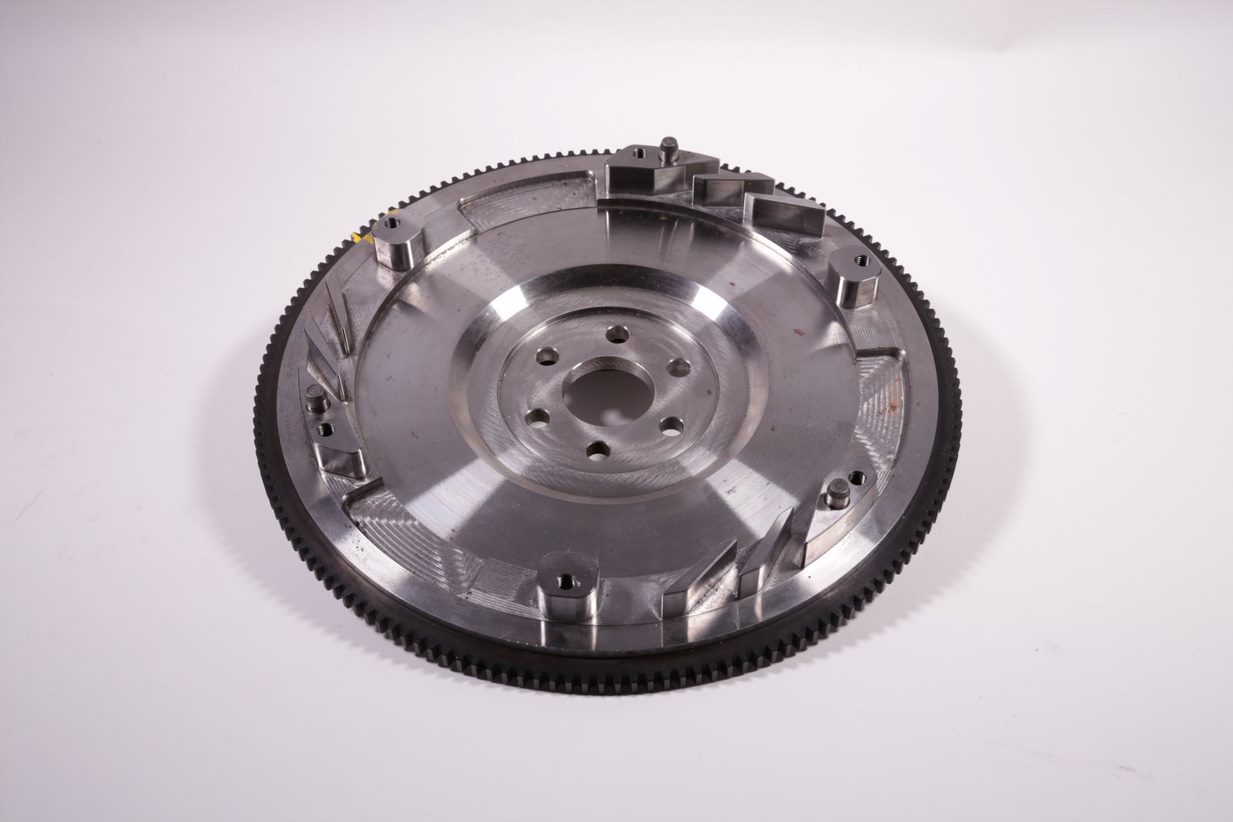
The Vengeance flywheel uses patent-pending machined-in stands to support the pressure plate. It also features directional vanes designed to help exhaust clutch debris as the material wears over time. As the stands are part of the flywheel itself, noise and vibration are reduced over other styles. All flywheels and assemblies are zero-balanced; ’86-’95 5.0 kits come with the proper 50 oz-in weight to be used if necessary.
Three Flavors Of Performance
During the development process, Vengeance engineers decided to create twin-disc clutches regardless of the model year and not offer a heavy single-disc clutch as some others do. There are several reasons the twin-disc clutch is more effective in these cars. More importantly, Vengeance can use many of the same components across the board when it comes to the pressure plate and other mechanicals to achieve economy of scale while providing high-performing parts – an advantage that is passed along to the consumer (scroll down to check out that pricepoint).
Stage 1
The Stage 1 Vengeance twin-disc clutch utilizes organic-faced discs that can handle up to 750 lb-ft of wheel torque.
“That’s where most of our bread-and-butter is: the cars in the 600, 650, 700 horsepower range. Most of the guys who use them have street cars. They’re running down low in traffic; they need something to drive that holds the power,” says Siebert. “It uses steel-backed concentrated copper woven material that has a high heat resistance and works out well for a full-body car.”
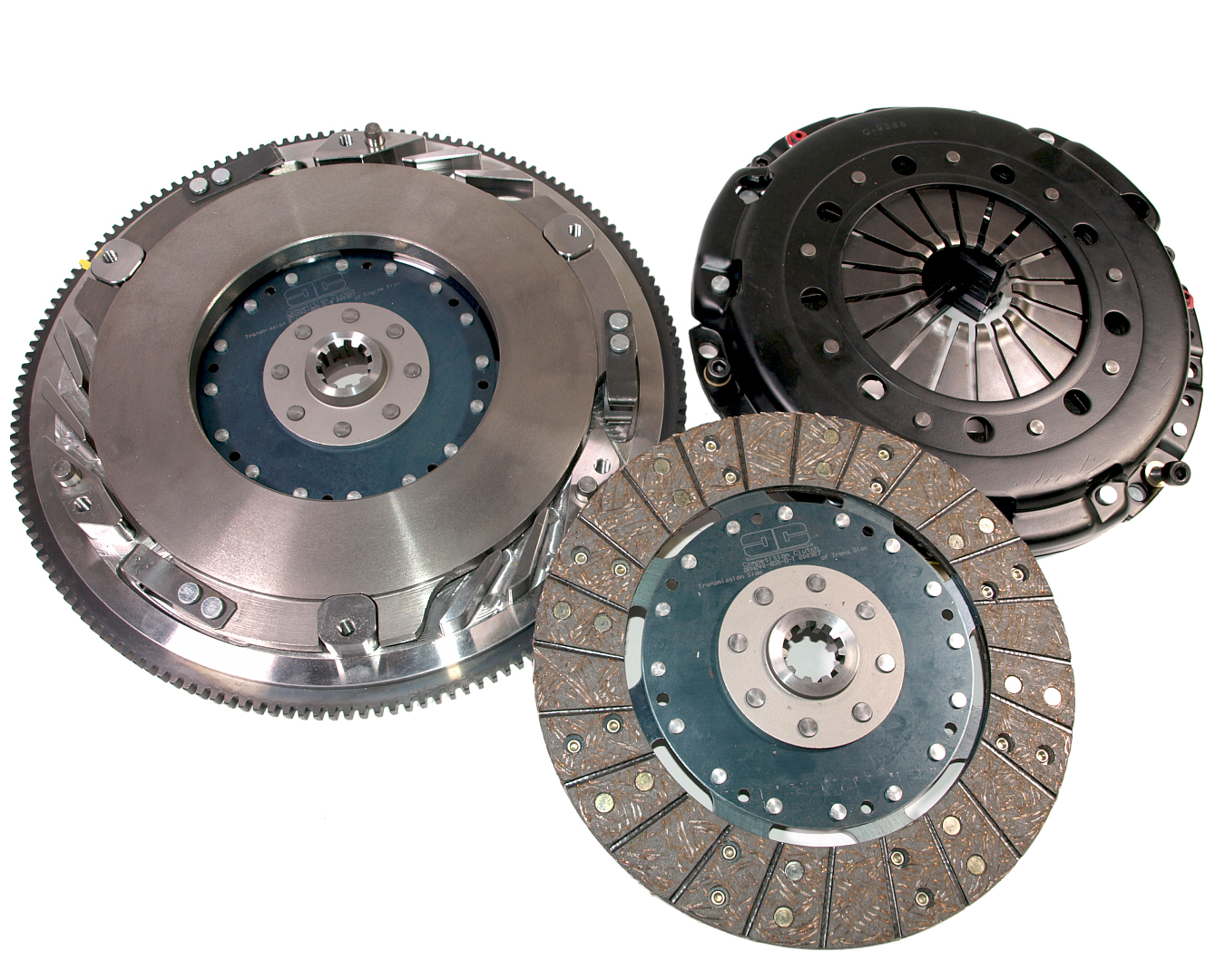
This exploded view of the Stage 1 organic clutch assembly shows how the midplate rides on the flywheel lugs (left) and how the assembly is precision-fit to reduce noise and vibration. Each pressure plate is set to the correct depth at the factory.
Siebert says that a customer will experience a near-stock pedal feel, just a bit closer to the floor with linear and smooth effort.
“The release is quick up off the floor, but is not a super-hard on/off light switch. You can slip this and drive with it daily, and [it] allows the car to seamlessly pull off the line and doesn’t have any hard shake or shudder that you might get with a more aggressive unit,” Siebert says.
One thing to think about: the organic facing is 100-percent not recommended for racing action. “The organic material will splinter apart if you launch the car hard enough times on sticky tires. It’s great for the street and making power, but if you’re going to do any kind of racing in general, full-on ceramic would be the way to go,” says Siebert.
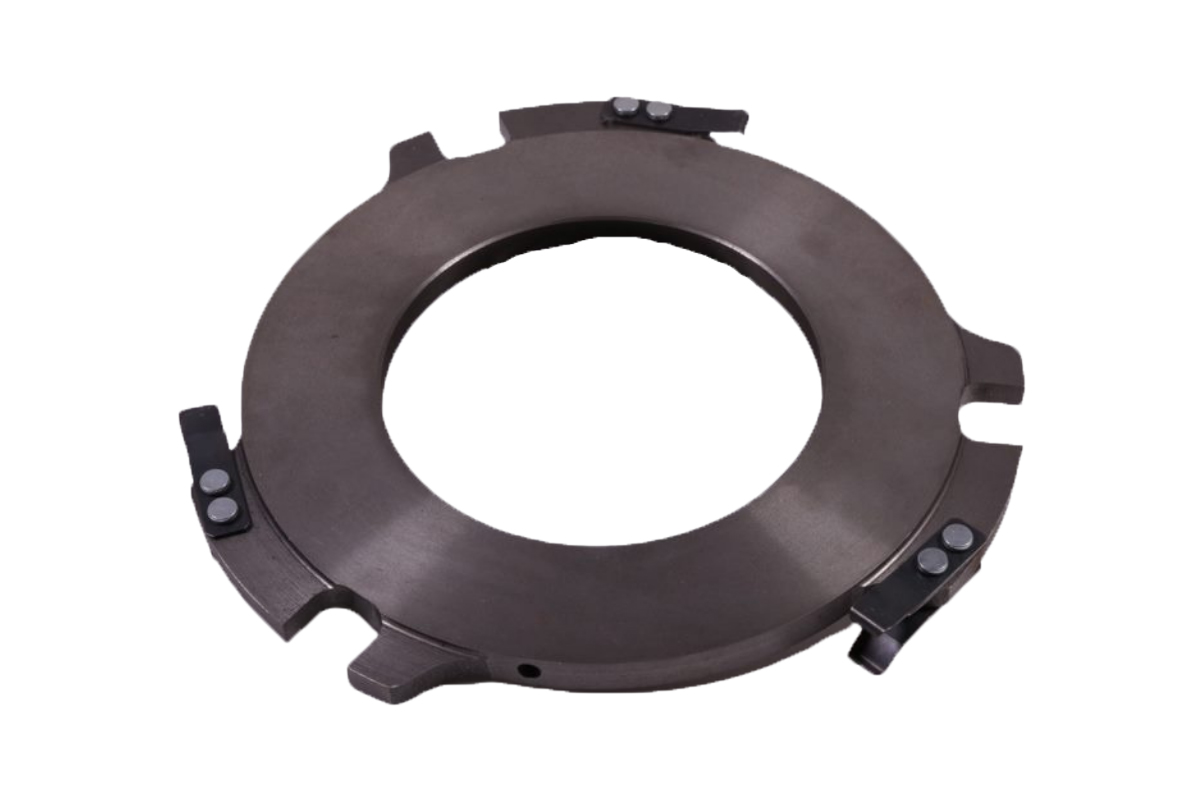
The cast steel midplate (some call it a floater) glides on the flywheel legs and provides the secondary flywheel surface for the clutch discs to engage.
Stage 2 – Cerametallic
The Stage 2 clutch material is Vengeance’s proprietary segmented cerametallic material, which takes the power-handling capability up to 850 lb-ft of wheel torque.
“These are designed for guys who are making power and want to take full advantage of a car that runs on the street and goes to the track, as well. It’s the same basic design. The cerametallic material is a puck-style design that provides eight individual contact surfaces per side for 16 surfaces per disc. The clutch grabs hard and holds up well to heat, but is soft enough to be used on a daily-driven kind of car, too,” he says.
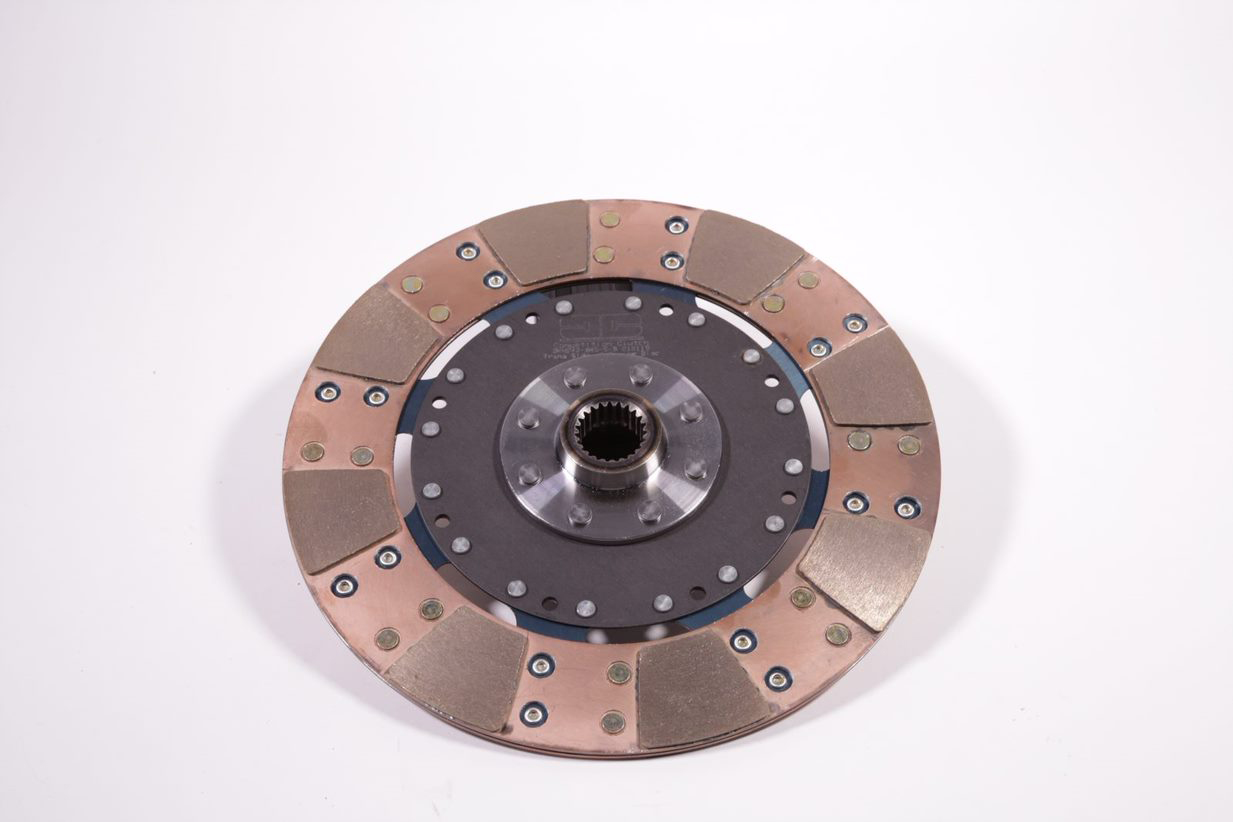
The Stage 2 cerametallic clutch uses a full-faced disc with eight friction surfaces per side along with an unsprung hub for quick engagement.
Engagement is more abrupt than what a driver would see with the Stage 1 clutch, as befits a material suitable for more spirited driving activities, but the Stage 2 unit is still forgiving on takeoff.
“It definitely has some of the smooth engagement qualities of the organic clutch, but it’s quicker and more off-the-floor, as it’s going to grab more quickly due to the material,” says Siebert.
Given the capabilities of the cerametallic material, it is likely that this clutch will check a lot of boxes for the Mustang crowd who spends several weekends a year at the dragstrip but still wants to drive the car home at the end of the day.
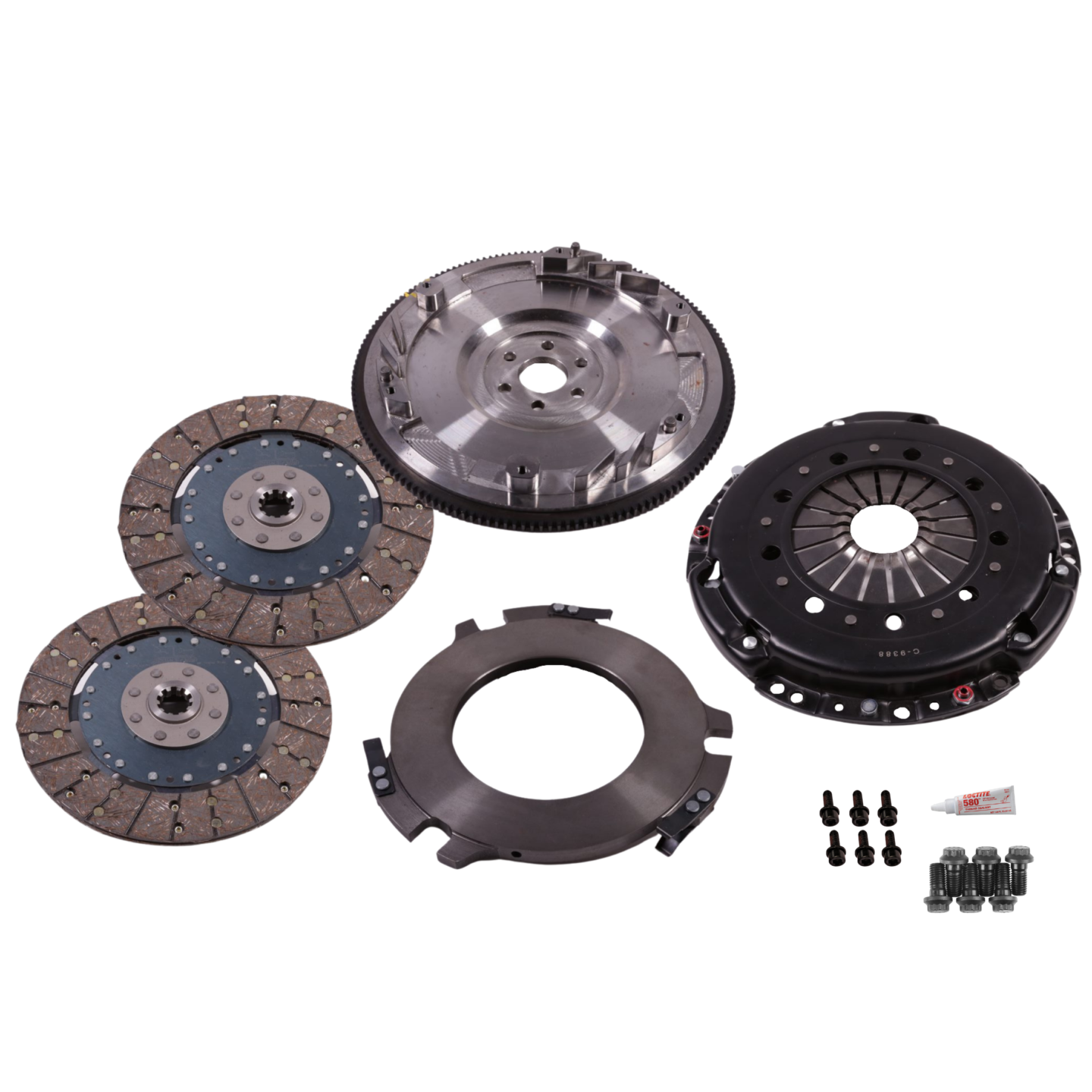
Each clutch kit comes with all necessary hardware, including threadlocker. The user will need to supply a new pilot bearing and clutch release bearing for the application.
Stage 3 – The Racer’s Choice
Then we have the racers– the guys and girls who are at the track every weekend flogging the life out of their Mustangs. The “drive it like you stole it” crowd. These are the folks who need the Vengeance Stage 3 clutch.
“The Stage 3 has a higher clamp-load pressure plate in it. This equals about 50-percent higher than the Stage 1 and 2 clutches. It is made for all-out racing and will hold up to 1,000 lb-ft of torque. Engagement on this one is like a light switch — it grabs and goes,” says Siebert.
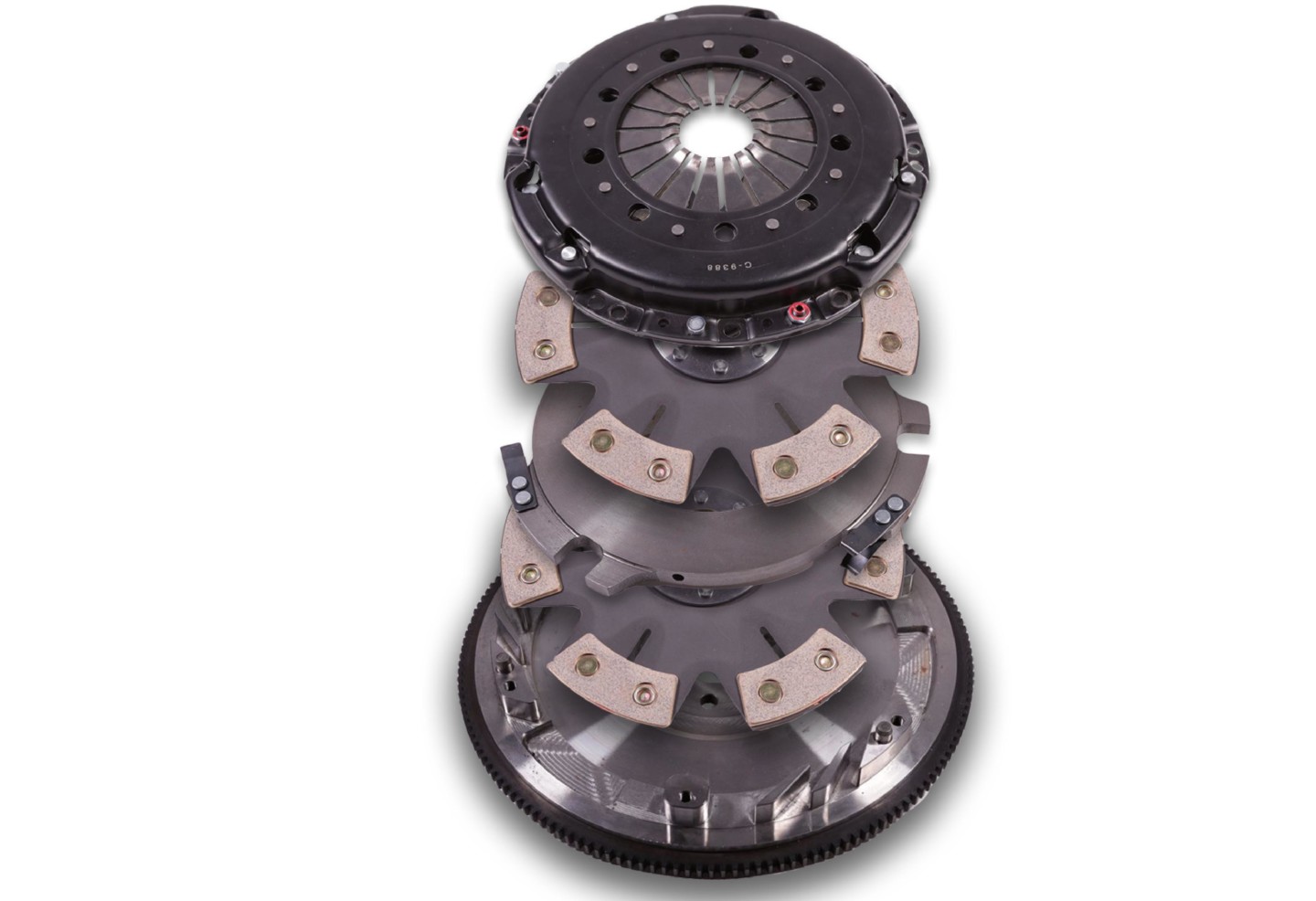
The six-puck clutch utilizes a pair of unsprung discs along with the company’s proprietary cerametallic friction compound to provide a racing clutch assembly that will handle 1,050 lb-ft of wheel torque, enough for just about any combination on the planet.
The Stage 3 clutch utilizes the same cerametallic facing as the Stage 2 clutch. The six-puck design however implements higher power-handling capability due to more surface area at the disc. The disc is also more rigid than the Stage 2 disc. This allows it to better handle the shock load from the increased torque transfer.
Future Proof
If a racer starts with a 23-spline MT-82 transmission in a later-model Mustang and purchases one of these clutches, then later changes out to a Tremec transmission with its more-robust 26-spline input shaft, they won’t need a whole new clutch, only a new pair of discs to work with the new transmission. The same goes for the T-5, T-45, and TR-3650 crowd. A transmission upgrade is just a disc switch away with the Vengeance clutch kits. Organic replacement discs at $172 each (x2), $200 each for the cerametallic discs, and $225 each for the six-puck discs.
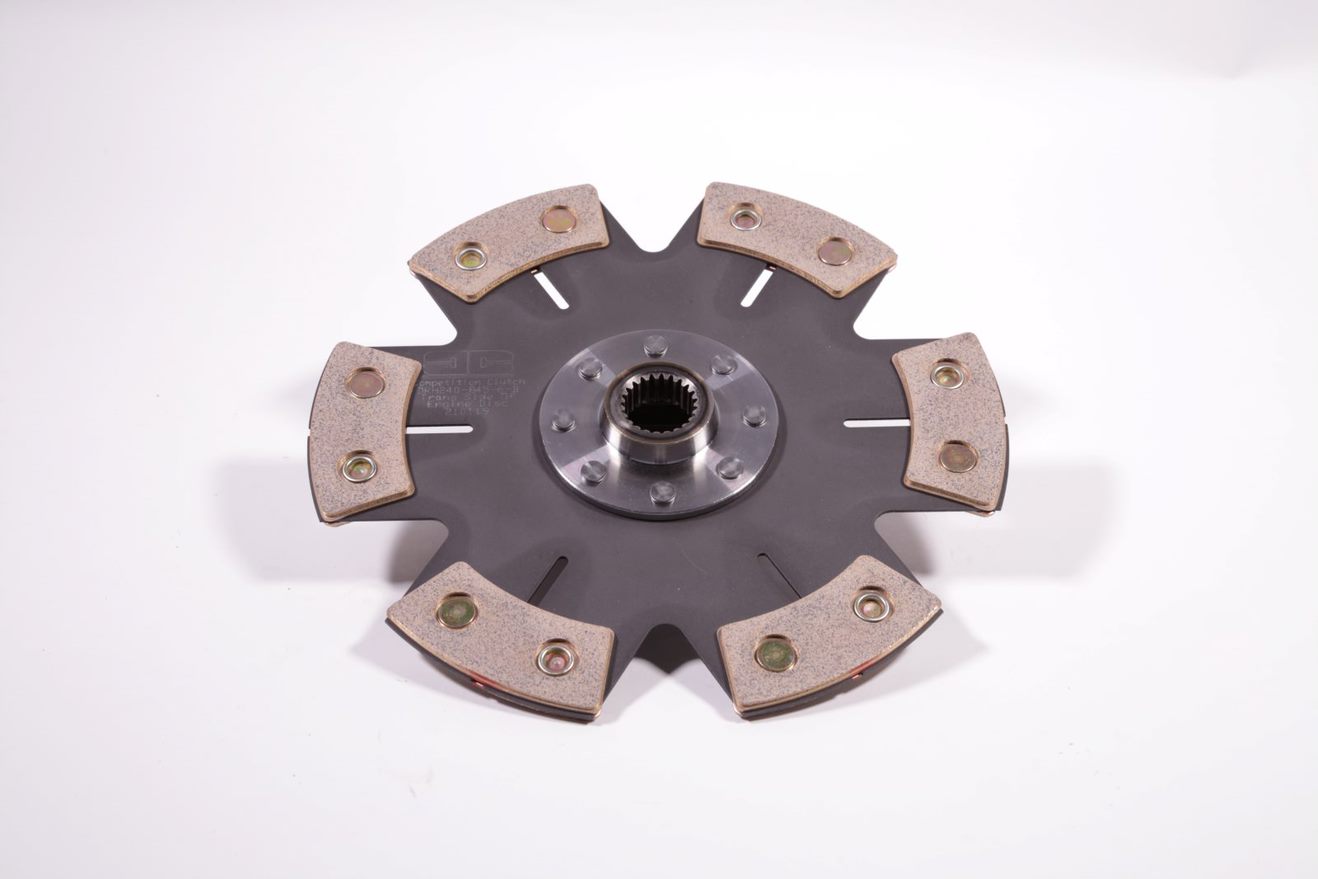
The increased surface area of the pucks on the Stage 3 discs means that engagement is on-off when compared to the Stage 2 clutch, and these are not ideal for street driving. But if you’re at the track flogging your Mustang for all it’s worth every single weekend, then this is the clutch for you.
The design simplicity means there’s a Stage 1, 2, and 3 part number for each Mustang generation. These generations include ’86-’95, ’96-10 (one six-bolt and one eight-bolt part number), and ’11-17. The early-gen clutches come zero-balanced but include a 50 oz-in flywheel weight if the customer needs it for the application.
Interestingly, the Stage 1 and Stage 3 clutches check in at the same price of $858 all told. The Stage II clutch comes in at $1,195. Siebert attributes this to differences in manufacturing procedures and materials, which are more intensive for the street-going cerametallic unit.
In Conclusion
There are plenty of clutch kits on the market for the Mustang in many flavors, sizes, styles, and price points. Vengeance from Competition Clutch believes it’s hit the sweet spot with these units from a fit and application perspective. If there’s any advice we have for clutch buyers, it’s “be honest with yourself about how you use your car, and choose wisely,” as choosing a clutch that you think is adequate for your goals and then turns out to be the wrong unit is a lesson in

